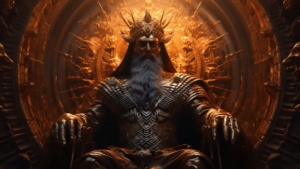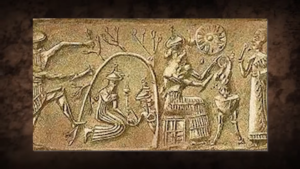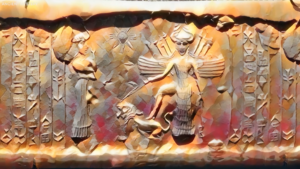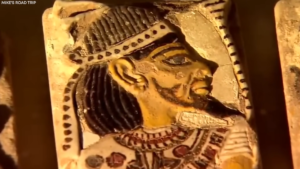In a recent revelation that has sent shock waves through the worlds of archaeology and history, scientists have achieved an unprecedented feat by unlocking the long-sealed tomb of Gilgamesh. The historic unveiling of this tomb marks a truly fascinating discovery, laying bare secrets and captivating facts that have eluded humanity for thousands of years. Join us as we delve into the mysteries concealed within the tomb’s ancient walls, where untold secrets and, who knows, maybe even treasures will be revealed.

**Gilgamesh: A Legendary Figure from Ancient Mesopotamian Lore**
Gilgamesh, a legendary figure from ancient Mesopotamian lore, has long captured the imagination of scholars and storytellers alike. His epic tales, recorded in the renowned Epic of Gilgamesh, transcend time and mythology, weaving a narrative that merges the worlds of gods and mortals.
The groundbreaking discovery of this ancient king’s tomb opens a new chapter in humanity’s quest for understanding as scientists unravel the mysteries that lie within it. Many historians agree that Gilgamesh served as a historical ruler of the Sumerian city-state of Uruk, likely reigning during the early part of the Early Dynastic Period, approximately 2900 to 2350 BC.

While precise dates for Gilgamesh’s life are challenging, estimates typically place it between 2800 and 2500 BC. Inscriptions from archaic texts at Ur and the Tamal inscription credit Gilgamesh with constructing Uruk’s walls, adding to the historical evidence of his existence.
**The Epic of Gilgamesh: A Tapestry of Adventures and Mythology**
The Epic of Gilgamesh provides the most comprehensive account of his adventures. Preserved on 12 clay tablets dating to the 7th century BC and discovered in the library of Ashurbanipal in Nineveh, this epic is not fully intact, with numerous sections missing or damaged. Some scholars and translators supplement these gaps with material from earlier Sumerian poems or other epic versions.
In this epic, Gilgamesh is introduced as 2/3 divine and 1/3 mortal, initially depicted as a harsh and oppressive ruler. However, divine intervention transforms him as Anu, the god, creates the wild man Enkidu to humble Gilgamesh. Despite Gilgamesh’s ultimate victory in their wrestling match, he is deeply impressed by Enkidu’s strength and resilience, leading to their profound friendship of equal standing.

The epic chronicles their journey to the cedar forest, guarded by the monstrous Humbaba. Divine assistance from the god Shamash aids them in defeating Humbaba. Other adventures include Gilgamesh’s rejection of the goddess Ishtar, their confrontation with the Bull of Heaven, and Enkidu’s tragic death.
The latter part of the epic follows Gilgamesh’s arduous journey driven by sorrow and fear of his mortality. He overcomes numerous challenges to reach Utnapishtim, the lone survivor of the great flood bestowed with immortality by the gods.
**Gilgamesh in Biblical Parallels and Influence on Literature**
Many themes, narrative components, and characters within the Hebrew Bible correlate with the Epic of Gilgamesh. Key parallels include stories of the Garden of Eden, wisdom from Ecclesiastes, and the Genesis flood account. Scholars have long acknowledged similarities between the tales of Enkidu and Shamhat and Adam and Eve.
The influence of the Epic of Gilgamesh extends beyond Mesopotamia. It has left an indelible mark on both epic poems attributed to Homer, combining the power and tragedy of The Iliad with the wanderings and marvels of The Odyssey.

**The Quest for Gilgamesh’s Tomb: Unraveling the Mystery**
The location of Gilgamesh’s tomb remains a historical mystery, with various speculations and theories regarding its possible location. While no conclusive evidence has been found, several theories propose locations such as Uruk, Jashen Kiran in southern Iraq, Tel al-Mukayyar (ancient Ur), Dezful in Iran, and Haran in Turkey.
Each theory draws on historical research, cultural connections, and the intricate interplay of history and myth. The quest to uncover the elusive tomb of Gilgamesh continues, fueled by the tantalizing prospect of rediscovering a key figure from ancient Mesopotamian history.
As ongoing archaeological excavations and advancements worldwide progress, there is hope that the true location of Gilgamesh’s tomb will eventually be revealed. Until then, the mystery surrounding the final resting place of this legendary king adds an air of intrigue to the rich tapestry of ancient civilizations and their enduring stories.




